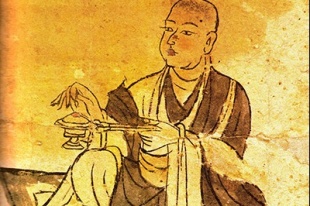Scents & sensibility

"Where funerary traditions are concerned, gold face covers have been discovered in a Tang Dynasty tomb site in Ningxia Hui autonomous region, northwestern China. The decorative sun and moon-shaped gold plate on the forehead of the tomb-owner indicates that he was an adherent of Zoroastrianism, a religion that originated in ancient Persia and was widely adopted by the Sogdian people, the dominating traders on the Silk Road. On the other hand, covering the face of the dead with pieces of jade was a common practice for the rich and powerful in China between the 12th century BC and the third century AD.
"Are there any connections between the two? More concrete proof is needed before we draw any conclusions. Sometimes I am more tempted to believe that by destiny or happenstance, members of different civilizations may have arrived at the same destination, via different routes. While we dust away the desert sand to reveal the spider's web that was the ancient Silk Road, it is equally important not to make forced links."
But it is always satisfying to be able to pick up two loose threads and reconnect them, says Jiang Jie of the Famen Temple Museum.
"While the spice culture took hold of people's imagination in China, with the import of Chinese paper, ancient Persian rulers were finally able to end the practice of perfuming their strong-smelling parchment, before sending their written edicts to different corners of the vast empire.
"It is commonly agreed that people who have taken up a meaty diet generally have stronger body odor than those who have not, and are consequently more reliant on scents. That explains why in ancient times many kinds of spices came from the northern steppe.
"It also explains why the use of spices mainly took on two different directions in the ensuing era: for Western people, they turned into liquid perfume, applied directly on the skin; for Chinese, they became incense for burning, whose aroma permeates the surroundings."
One typical form of incense burner from the Han Dynasty (206 BC-AD 220) is the bo shan lu, or "Boshan Mountain burner". True to its name, the upper half of the burner rises from the cuplike base in a swirl of gold and silver, punctuated by pores from which plumes of smoke would emerge and rise.
"Most people believe that the burner evokes the sea-surrounding fairy mountain in ancient Chinese literature, a mountain upon which deities would descend during their earthly visits," Jiang says. "But others have suggested that the shape of the burner actually came from West Asia, with the mountain probably referring to those ones described in Buddhist scriptures.
"An indigenous creation or a Silk Road import? Debate is likely to rage forever. Either way, shrouded in the mist emanating from an ageless work of art is the landscape for mind's travel."





































